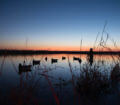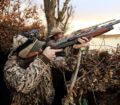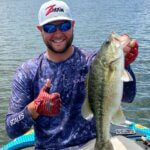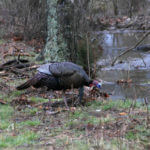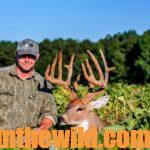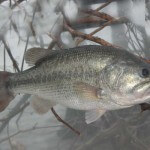Editor’s Note: Barney Calef of Cedar Rapids, Iowa, who has been hunting ducks for 48 years, is the owner of Calef Calls Inc. (www.calefcalls.net) that produces duck and goose calls.
 Some hunters will set their decoys really close together when the weather is hot. That’s a mistake. Other hunters will set their decoys too far apart from each other when the weather is very cold. I filmed a duck hunt in South Dakota where the temperature was in single digits for about three days. We had our decoys sitting really close to each other in what we called a tight decoy spread. On the fourth morning, when we arrived at the blind, the weather report stated that the air temperature would be about 35 degrees and then warm up to 50 degrees during the day. We left our tight spread set-up for the first part of the morning, but we had a tough time getting the ducks to come into that tight spread. So, later in the morning, we got out of our blind and loosened up our decoys by putting them farther apart, and the ducks started coming in like we were having blue light special at Kmart.
Some hunters will set their decoys really close together when the weather is hot. That’s a mistake. Other hunters will set their decoys too far apart from each other when the weather is very cold. I filmed a duck hunt in South Dakota where the temperature was in single digits for about three days. We had our decoys sitting really close to each other in what we called a tight decoy spread. On the fourth morning, when we arrived at the blind, the weather report stated that the air temperature would be about 35 degrees and then warm up to 50 degrees during the day. We left our tight spread set-up for the first part of the morning, but we had a tough time getting the ducks to come into that tight spread. So, later in the morning, we got out of our blind and loosened up our decoys by putting them farther apart, and the ducks started coming in like we were having blue light special at Kmart.
If the morning’s very cold, and I’ve got decoys on the land, I may have those decoys within a foot of each other. I want to give the impression that those ducks and geese are staying close to each other trying to get warm. We can’t set our floaters (floating decoys) that close, because we want the decoys to move with the wind. So, we’ll set 100 decoys to make a spread that’s perhaps only 60-yards long and 25-yards wide. Tightening-up or loosening your spread is much easier when you’ve got full body decoys or shells, and you’re putting the decoys on sandbars, mud flats or ice. You want your floaters to be able to move and not run into each other. Often, when we have about 3 inches of ice, we can crack the ice and create a killing hole out in front of our blind, while trying to keep the ice intact. Then we can sit our shells and full-bodied decoys on the ice to look natural. Another thing that helps us is that we’re hunting Canada geese and ducks at the same time. So, when we ring these holes, we’ll put full-bodied duck decoys and full-bodied Canada geese decoys out to make our set-up look somewhat like a roost.
 To learn more about hunting, go to https://johninthewild.com/books to see John E. Phillips’ Kindle, print and Audible books.
To learn more about hunting, go to https://johninthewild.com/books to see John E. Phillips’ Kindle, print and Audible books.

